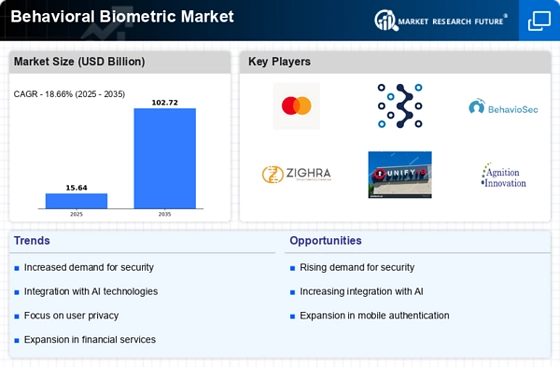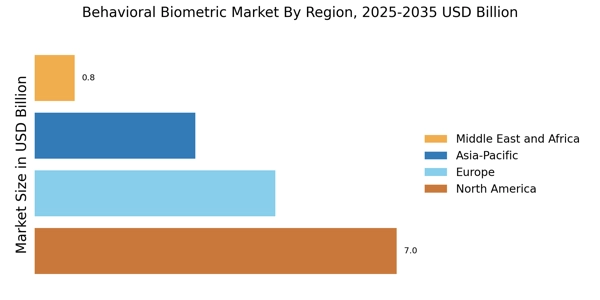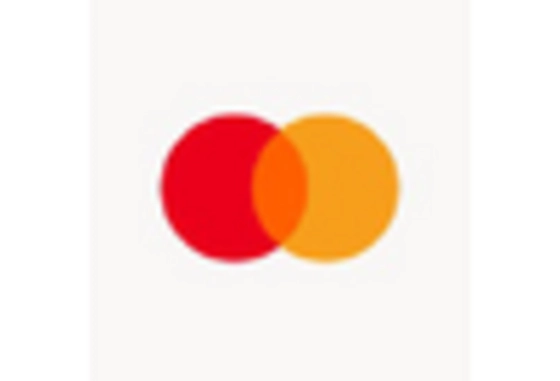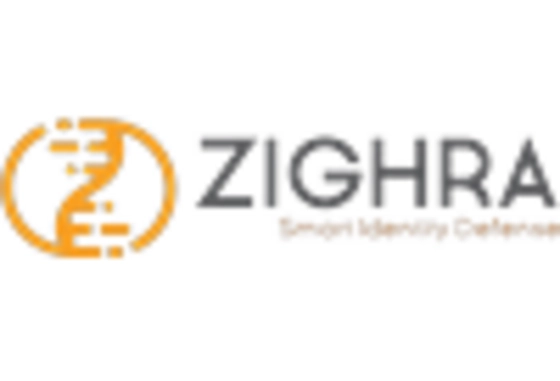Advancements in Technology
Technological innovations are a key driver in the Behavioral Biometric Market, as advancements in artificial intelligence and machine learning facilitate the development of more sophisticated biometric systems. These technologies enable the analysis of complex behavioral patterns, such as keystroke dynamics and mouse movements, which can be used to create unique user profiles. The integration of these technologies is expected to enhance the accuracy and reliability of behavioral biometrics, making them more appealing to businesses. As organizations seek to leverage these advancements, the market is likely to witness a surge in adoption rates, with projections indicating a potential market size exceeding several billion dollars by the end of the decade.
Rising Cybersecurity Threats
The increasing frequency and sophistication of cyberattacks has propelled the demand for advanced security measures, particularly in the Behavioral Biometric Market. Organizations are increasingly recognizing that traditional authentication methods, such as passwords, are inadequate against modern threats. As a result, the market for behavioral biometrics is projected to grow significantly, with estimates suggesting a compound annual growth rate of over 20% in the coming years. This growth is driven by the need for continuous authentication methods that can adapt to user behavior patterns, thereby enhancing security. The Behavioral Biometric Market is thus positioned to play a crucial role in safeguarding sensitive information and maintaining user trust in digital platforms.
Increased Investment in Digital Transformation
The ongoing digital transformation across various industries is a significant driver for the Behavioral Biometric Market. Organizations are investing heavily in digital solutions to enhance operational efficiency and customer engagement. As part of this transformation, there is a growing recognition of the importance of secure authentication methods. Behavioral biometrics provides a compelling solution that not only enhances security but also aligns with the digital experience that consumers expect. Market analysis suggests that the investment in behavioral biometric technologies could see a substantial increase, with many companies viewing it as a critical component of their digital strategy. This trend indicates a promising outlook for the Behavioral Biometric Market in the coming years.
Growing Demand for Seamless User Authentication
The Behavioral Biometric Market is experiencing a surge in demand for seamless user authentication solutions. As consumers increasingly prioritize convenience and efficiency, businesses are compelled to adopt technologies that provide frictionless access to services. Behavioral biometrics offers a unique solution by allowing continuous authentication without interrupting the user experience. This trend is particularly evident in sectors such as finance and e-commerce, where user retention is critical. Market data indicates that companies implementing behavioral biometric solutions have reported a significant reduction in account takeover incidents, further driving interest in this technology. The potential for enhancing user satisfaction while maintaining security positions the Behavioral Biometric Market favorably for future growth.
Regulatory Pressures and Compliance Requirements
Regulatory pressures are shaping the landscape of the Behavioral Biometric Market, as organizations are increasingly required to comply with stringent data protection laws. Regulations such as the General Data Protection Regulation (GDPR) and the California Consumer Privacy Act (CCPA) mandate that companies implement robust security measures to protect user data. This has led to a heightened interest in behavioral biometrics, which offers a non-intrusive method of authentication that aligns with privacy standards. As businesses strive to meet compliance requirements, the adoption of behavioral biometric solutions is expected to rise, potentially leading to a market expansion that could reach unprecedented levels in the near future.


















Leave a Comment